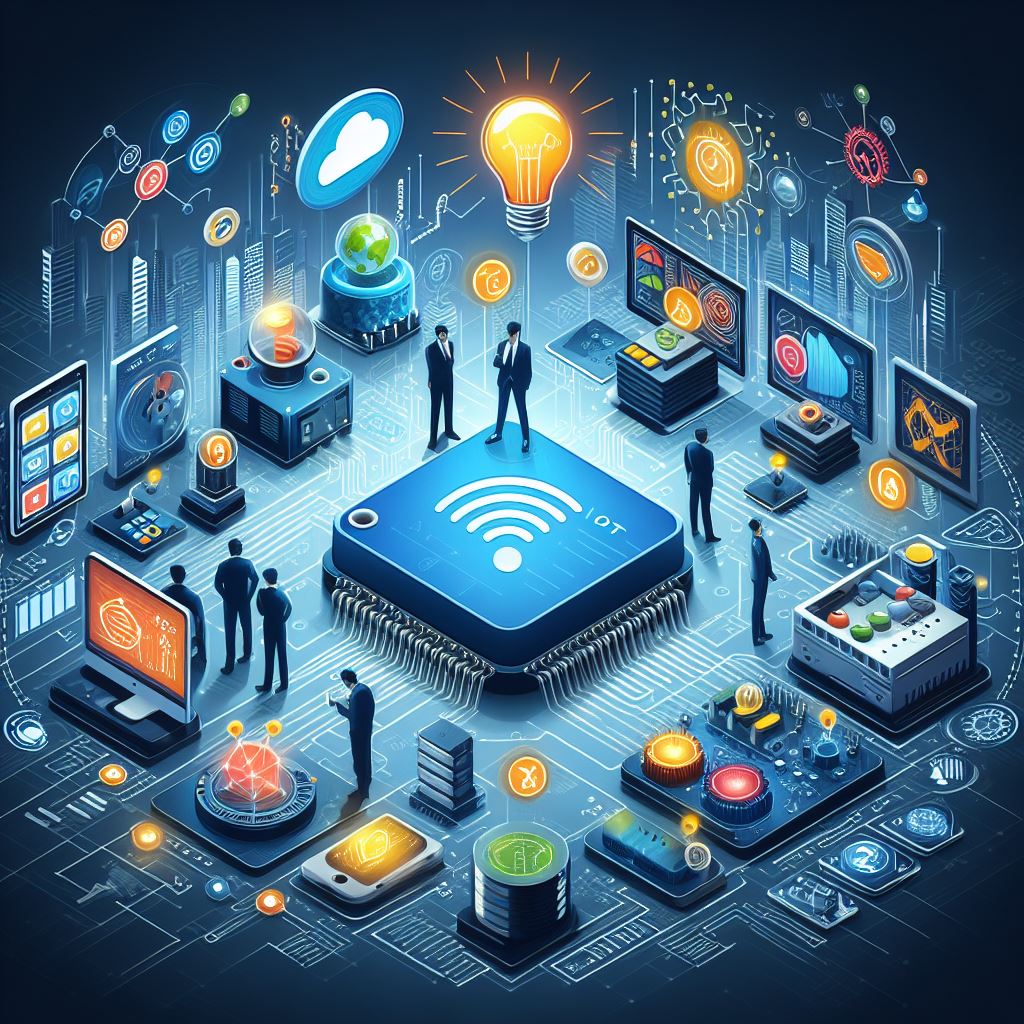The Internet of Things (IoT) has rapidly transformed the way we interact with technology, and at the heart of this revolution lie IoT sensors. These devices collect and transmit data from the physical world to the digital realm, enabling real-time insights and automation across various industries. This article explores the key applications of IoT sensors, highlighting their impact and potential across multiple sectors.
The IoT sensors Industry is expected to grow from USD 16.0 billion in 2024 to USD 70.1 billion by 2029; it is expected to grow at a CAGR of 34.4% during 2024 to 2029. Rising demand for connected and wearable devices are the key factors driving the growth of the IoT sensors market. The growing adoption of wearable devices, including fitness bands, smartwatches, smart glasses, EEG monitors, and pain management devices, is primarily driven by the healthcare sector.
1. Smart Homes and Buildings
IoT sensors play a crucial role in the development of smart homes and buildings. These sensors can monitor and control various systems, including lighting, heating, and security. For instance, smart thermostats utilize temperature sensors to optimize heating and cooling based on occupancy and preferences, leading to increased energy efficiency.
Moreover, security sensors, such as motion detectors and cameras, enhance safety by providing real-time alerts and remote monitoring capabilities. As homeowners increasingly seek convenience and energy savings, the adoption of IoT sensors in residential environments continues to grow.
2. Industrial Automation
In the realm of industrial automation, IoT sensors are transforming manufacturing processes. These sensors monitor machinery performance, track production metrics, and detect anomalies in real-time. For example, vibration sensors can predict equipment failures by analyzing patterns and alerting maintenance teams before costly breakdowns occur.
Additionally, IoT sensors facilitate inventory management by providing real-time data on stock levels and usage patterns. This level of insight helps businesses optimize supply chains, reduce waste, and improve overall operational efficiency.
3. Healthcare and Wearable Devices
IoT sensors are revolutionizing healthcare by enabling remote patient monitoring and personalized treatment. Wearable devices, equipped with sensors that track vital signs such as heart rate, blood pressure, and glucose levels, empower individuals to manage their health proactively.
Healthcare providers can access real-time data from these devices, allowing for timely interventions and reducing the need for hospital visits. Moreover, IoT sensors in medical equipment help ensure compliance with safety standards and enhance the overall quality of care.
Download PDF Brochure @
https://www.marketsandmarkets.com/pdfdownloadNew.asp?id=26520972

4. Smart Agriculture
In agriculture, IoT sensors are enhancing crop management and resource optimization. Soil moisture sensors, for instance, allow farmers to monitor soil conditions in real-time, enabling precise irrigation and reducing water waste.
Temperature and humidity sensors help optimize growing conditions for crops, while livestock sensors monitor animal health and behavior. By leveraging IoT sensors, farmers can increase yields, reduce costs, and promote sustainable farming practices.
5. Transportation and Logistics
The transportation and logistics sectors are experiencing significant benefits from IoT sensors. Fleet management systems utilize GPS and telematics sensors to monitor vehicle performance, track location, and optimize routes. This data helps reduce fuel consumption, improve delivery times, and enhance overall fleet efficiency.
Moreover, IoT sensors are vital in supply chain management, enabling real-time tracking of goods. Temperature and humidity sensors in shipping containers ensure that perishable goods are transported under optimal conditions, reducing spoilage and waste.
6. Environmental Monitoring
IoT sensors are increasingly used for environmental monitoring, providing valuable data on air and water quality, weather conditions, and natural disaster detection. These sensors can measure pollutants, track changes in environmental conditions, and alert authorities to potential hazards.
For example, air quality sensors can monitor pollutants in urban areas, helping cities develop strategies to improve air quality and protect public health. In disaster-prone regions, IoT sensors can detect seismic activity or monitor flood levels, providing critical data for early warning systems.
The applications of IoT sensors are vast and varied, impacting numerous industries and enhancing our daily lives. From smart homes and industrial automation to healthcare and environmental monitoring, these sensors enable real-time data collection and analysis, driving efficiency, safety, and sustainability.
As technology continues to advance, the potential for IoT sensors will only expand, paving the way for smarter, more connected solutions that address the challenges of tomorrow. Embracing IoT sensor technology is not just a trend; it is essential for businesses and communities aiming to thrive in an increasingly digital world
